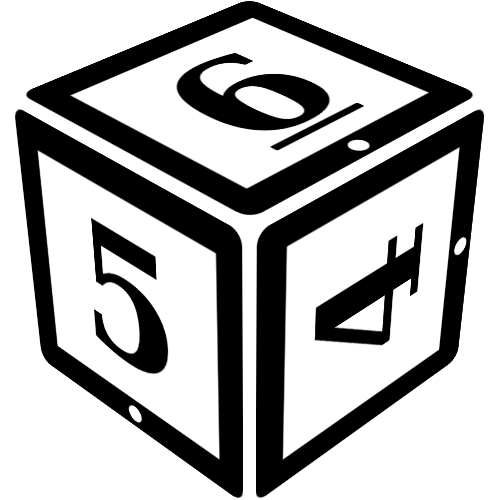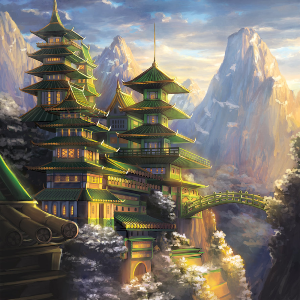Table of Contents
Almost all clothing worn by the noble families is made of silk, often layered for additional warmth. The standard clothing are kimono's, with elaborate scenes depicted on their silk. These may include trees, flowers, mountains or even animals, but are always scenes from nature. Silk kimono's for women have bright colours while men's kimono's have more subdued, earthly colours, though the scenes they display are no less grand than those of their female counterparts. Kimono's must always be worn with the right panel over the left panel, never the other way around: only the dead (and stupid foreigners) wear the left panel over the right panel.
Besides kimono's, men have many more options not available to women, including simper versions of courtly outfits that are more comfortable to wear when travelling for business or warfare. They may wear breeches when riding, which are often wide with boots hidden underneath.
Women wear their hair long and grow it to the greatest possible length, but once they are married, they may opt to wear elaborate wigs instead. If a womans hair begins turning grey, it is in fact expected that they do. Men wear their hair long in ponytails and such hairstyles are forbidden for commoners.
Both the Imperial Court and the courts of the various noble families have a significant presence of non-noble attendants. Most of these are officials and unlike Clairmont, these may hold significant power. Others are simply folk hoping to become officials or who have other qualities the nobility feels makes them worthy to attend courts.
Officials can be recognised by their official robes. They are almost invariably male and wear kimono's in the colour of the house they serve. In many cases a square at the chest and back shows a symbol that indicates their function which serves both as a means to easily identify them as well as being an indication of rank.
Courtiers generally are more free in their style of dress and attempt to emulate the nobility although always in a simpler, more subdued manner, always making sure they are not accidentally mistaken for nobles.
Commoners also wear clothes.
Specific Articles of Clothing
Imperial Crowns
Every member of the Imperial family has their own crown, custom made for them to their own specifications. Male members of the imperial family wear a crown shaped like a dragon, whereas the female members of the imperial family wear crowns shaped like a peacock, bird of paradise or other beautiful bird. These crowns are generally made out of gold, silver or platinum and feature a large number of gemstones.
Women's Kimono's
Young women wear excessively layered silk kimonos, which may have up to twelve layers. Just as the layers may be many they also tend to be long, trailing up to several meters behind them, depending on the age of the girl. Long wide sleeves called Furisode are an absolute must. All in all, this makes the gowns take up a lot of fabric, which adds to both their weight and price.
Make-up and masks
Heisei noble girls wear thick white make-up with red gradients around the eyes, something that is typically maintained throughout their youth. They may or may not paint their lips red, depending on the family and personal choice. This make up can be made using various recipes and most families have their own mix, varying from lead-based paints to squashed rice.
Girls may also wear masks, which can be more practical especially when outside in the wet Heisei weather, either instead of or in addition to the white make-up. These masks come in a variety of sizes and shapes but almost always depict white faces similar to those noble girls would normally display, sometimes with exaggerated features not feasible with regular make-up.
Armour
Male nobles are expected to have a set of custom made full-plate armour which they wear to battle and such armour covers them from head to toe including the face, which is often made to be an intimidating mask. Notably such armours often feature large flags secured on the back which mark their house and serve as rallying points for their men so they may easily find the ones they serve, though such flags can be removed quickly should the need for stealth be greater.
Besides this armour, male nobles have an additional set of ceremonial armour. Not bound by such strictures as their battle armour, the ceremonial armour is used in religiously tinted ceremonies and is often extremely elaborately decorated to the point where it is unusable.
Obi
The obi is a sash worn by the Heisei people as part of their traditional clothing. Obi's for men are narrow, no more than 10 centimeters wide, while obi for women are 30 centimeters wide or even wider and can be up to 4 meters long. The obi's original function is to keep the kimono closed, but it is also serve an aestetic function.
Men tie the obi in the front, usually with relatively simple knots, and they wear miniature statues known as Netsuke, attached to the obi, usually dangling from a short cord.
Women tie the obi in the back. These knots can be tied in many different ways and each knot has its own meaning and applications, most often representing flowers or birds. Womens obi's are often stiffened to allow various shapes to be created and can feature elaborate decorated images similar to the ones on kimono's, though usually simpler in design.
Clogs
Because of the muddy roads and the need to not walk the 'bad outside' into the home, many Heisei nobles wear wooden slippers. Because of the length of their kimono's, womens clogs are especially tall, sometimes reaching as high as 15 centimeters. Womens clogs are almost always solid blocks of wood, while male clogs are a much thinner plate of wood with one or two perpendicular plates serving as contact points. Both types of clogs are designed to keep out of the mud and though wearing them takes some getting used to, they serve their purpose quite well.
Tabi
Rather than shoes, Heisei people wear thick white socks inside known as Tabi. These ankle-high socks feature a split between the large toe and the other toes. Men may wear black or blue tabi for travelling. They are open at the back so they can be slipped on and laced close.
Fans
Fans are used by both men and women at court to cool themselves, generally being of the folding variety, with elaborate scenes depicted on them, similar to the ones depicted on kimono's, though fans may also contain characters spelling poems and sayings. Fans may also be prepared as weapons, known as war fans, which can be used both offensively and defensively.
Hats
Heisei fashion features many elaborate headgear. Men often wear large hats which may indicate positions. These can be quite complicated and sometimes they need to be secured to stay properly upright. Women never wear hats.
Hairpieces
Rather than hats, women wear kanzashi or hair ornaments, as well as hair sticks. Kanzashi are often quite elaborate and are woven into the hair with parts sticking out behind and above the head, but they can take on a wide variety of shapes and sizes. Hair woven over such extensions may feature a multi-layered fountain look and hairpieces may sport or be decorated by flowers or have jewellery hanging from them. Sometimes these hairpieces are incorporated into wigs or feature extensions. The hairpieces are generally made of gold, silver, tortoise shells and silk.

